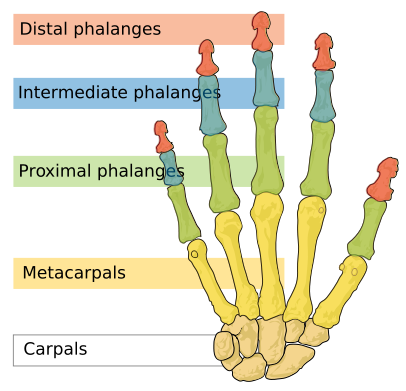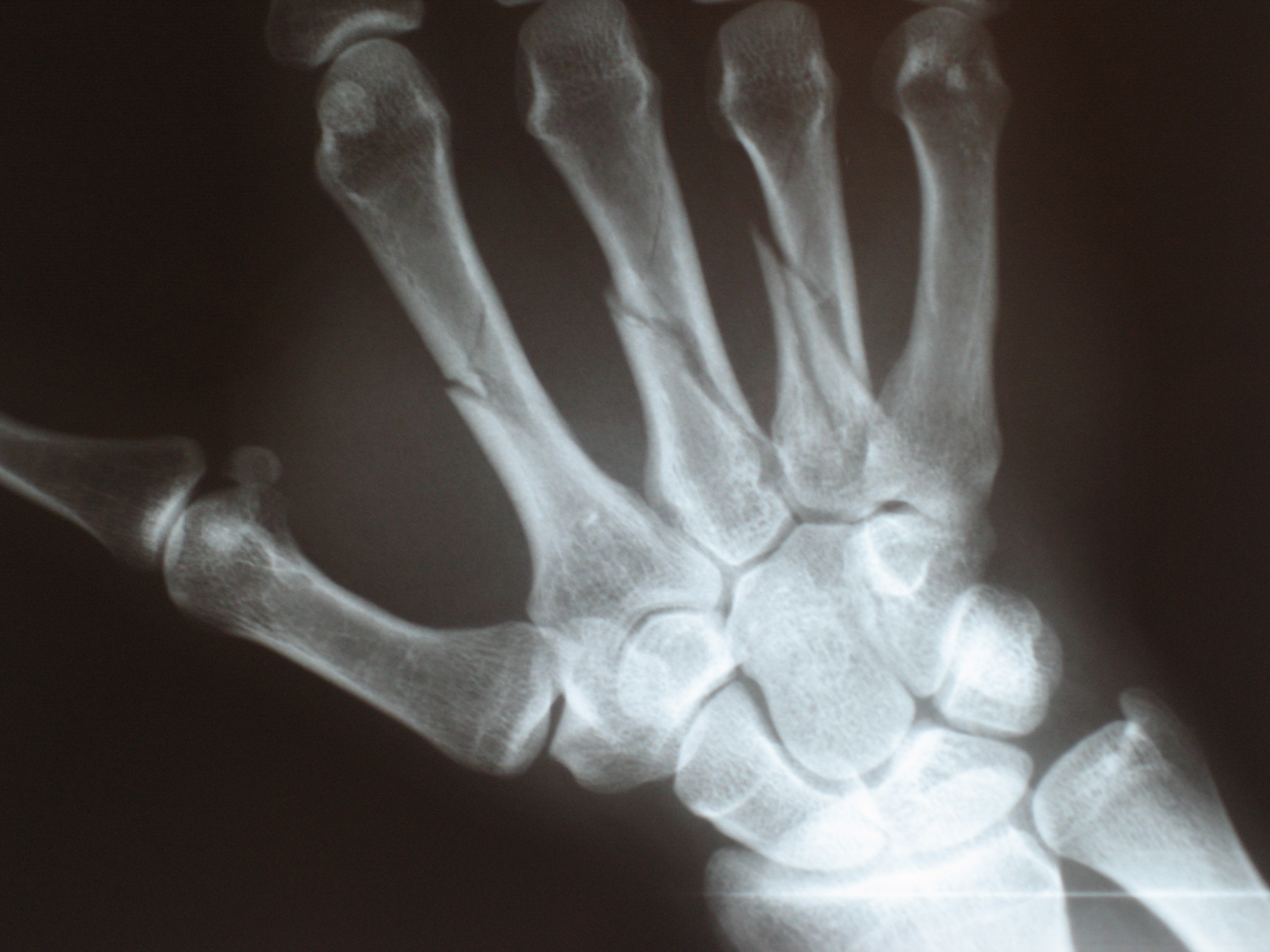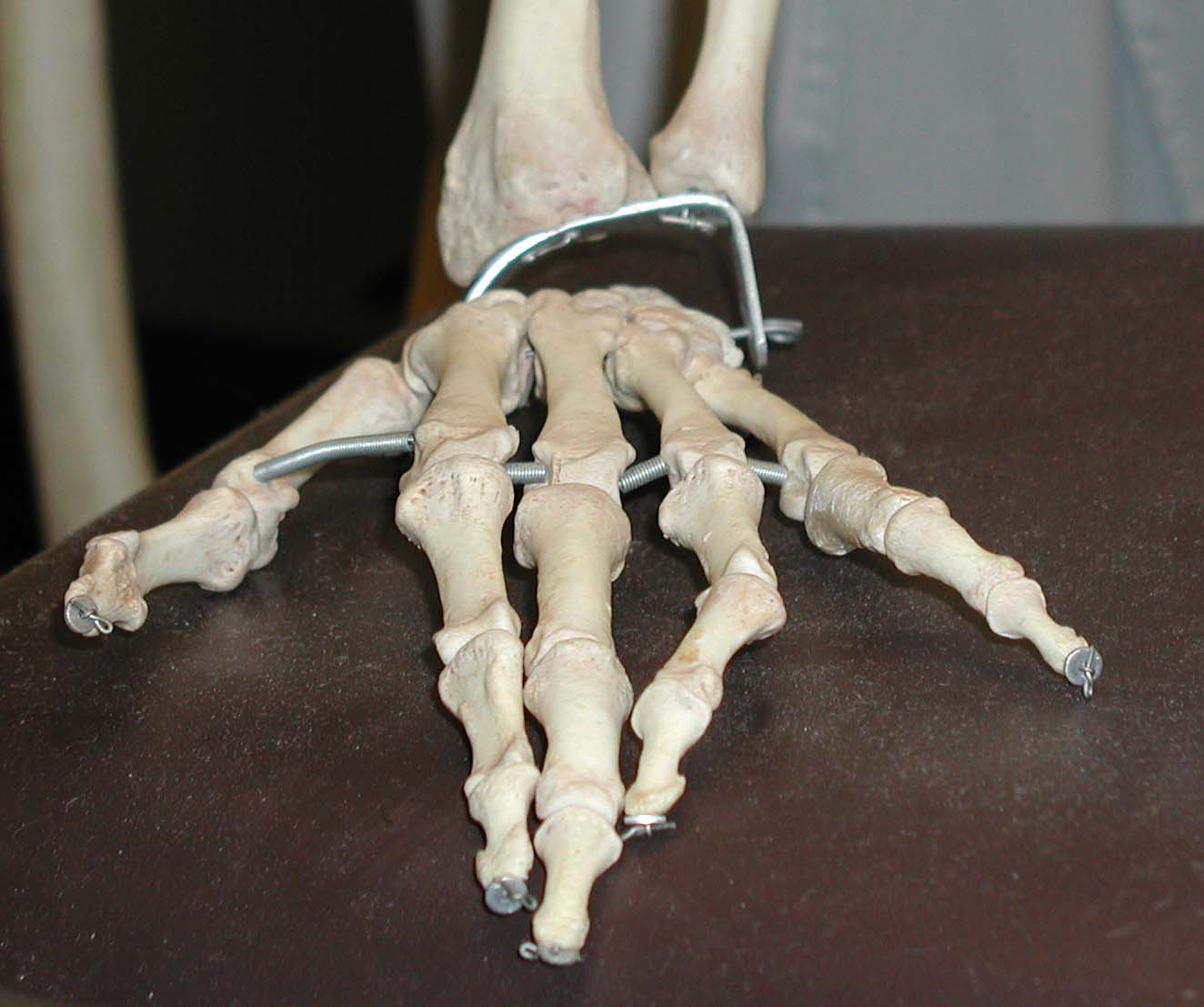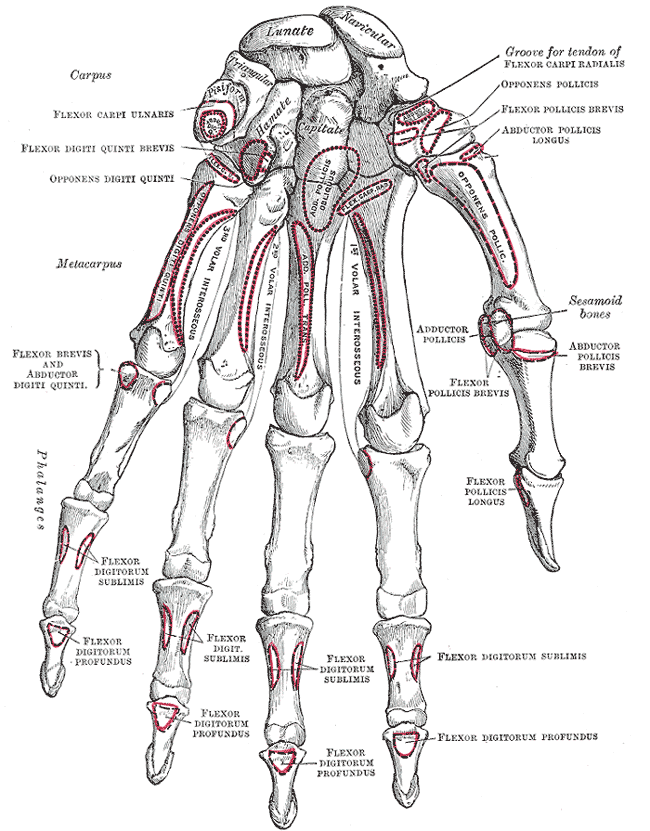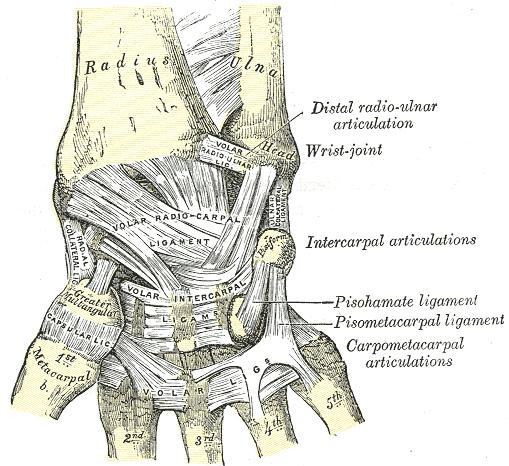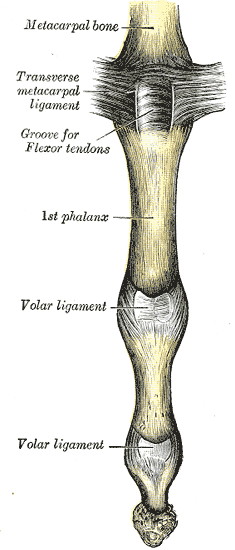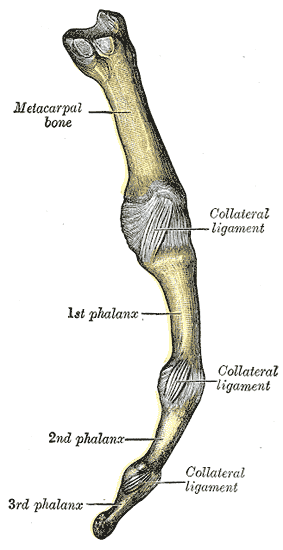Metacarpus
Template:Infobox Bone Editor-In-Chief: C. Michael Gibson, M.S., M.D. [1]
The metacarpus is the intermediate part of the hand skeleton that is located between the fingers distally and the carpus which forms the connection to the forearm.
Specific metacarpals
It consists of five cylindrical bones which are numbered from the radial to the ulnar side (ossa metacarpalia I-V).
- First metacarpal bone
- Second metacarpal bone
- Third metacarpal bone
- Fourth metacarpal bone
- Fifth metacarpal bone
Common characteristics of the metacarpal bones
Each consists of a body and two extremities.
Body
The body (corpus; shaft) is prismoid in form, and curved, so as to be convex in the longitudinal direction behind, concave in front.
It presents three surfaces: medial, lateral, and dorsal.
- The medial and lateral surfaces are concave, for the attachment of the interosseus muscles, and separated from one another by a prominent anterior ridge.
- The dorsal surface presents in its distal two-thirds a smooth, triangular, flattened area which is covered in by the tendons of the Extensor muscles. This surface is bounded by two lines, which commence in small tubercles situated on either side of the digital extremity, and, passing upward, converge and meet some distance above the center of the bone and form a ridge which runs along the rest of the dorsal surface to the carpal extremity. This ridge separates two sloping surfaces for the attachment of the Interossei dorsales.
To the tubercles on the digital extremities are attached the collateral ligaments of the metacarpophalangeal joints.
Base
The base or carpal extremity (basis) is of a cuboidal form, and broader behind than in front: it articulates with the carpus, and with the adjoining metacarpal bones; its dorsal and volar surfaces are rough, for the attachment of ligaments.
Head
The head or digital extremity (capitulum) presents an oblong surface markedly convex from before backward, less so transversely, and flattened from side to side; it articulates with the proximal phalanx.
It is broader, and extends farther upward, on the volar than on the dorsal aspect, and is longer in the antero-posterior than in the transverse diameter.
On either side of the head is a tubercle for the attachment of the collateral ligament of the metacarpophalangeal joint.
The dorsal surface, broad and flat, supports the tendons of the extensor muscles; the volar surface is grooved in the middle line for the passage of the Flexor tendons, and marked on either side by an articular eminence continuous with the terminal articular surface.
Articulations
Besides their phalangeal articulations, the metacarpal bones articulate as follows:
- the first with the greater multangular;
- the second with the greater multangular, lesser multangular, capitate and third metacarpal;
- the third with the capitate and second and fourth metacarpals;
- the fourth with the capitate, hamate, and third and fifth metacarpals;
- and the fifth with the hamate and fourth metacarpal.
See also
Additional images
-
Human hand bones
-
Multiple fractures of the metacarpals (aka broken hand).
-
Hand bones
-
Bones of the left hand. Volar surface.
-
Ligaments of wrist. Anterior view.
-
Metacarpophalangeal articulation and articulations of digit. Volar aspect.
-
Metacarpophalangeal articulation and articulations of digit. Ulnar aspect.
Template:Gray's Template:Bones of upper extremity
de:Mittelhand it:Metacarpo he:עצמות המסרק (כף יד) la:Metacarpus lt:Delnakauliai nl:Middenhandsbeen sk:Záprstná kosť sv:Mellanhand sl:Dlančnice th:กระดูกฝ่ามือ uk:П'ястя
